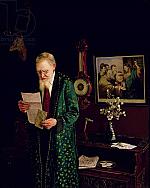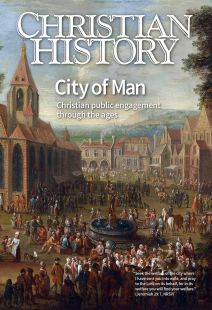Organizing for engagement

[Activities of the Mechelen beguines, 1578, Unknown Artist—Museum Hof van Busleyden Mechelen / [Public domain] Wikimedia]
Spoudaioi/Philoponoi: These organizations in the fourth-century eastern Roman Empire cared extensively for the homeless and sick. Christians were known from their earliest days for caring not only for their own sick, but everyone else’s as well. Healthcare and social services
Basiliad: Founded by Bishop Basil of Caesarea c. 380, this is a direct ancestor of modern hospitals; Basil drew inspiration from urban monks he knew who helped the sick and poor. Basil’s hospital provided a direct, organized way to treat the sick and to study disease and treatment. Healthcare and social services, science
Benedictines: Although Benedict’s Rule (p. 15) originally imagined limited contact with the world, his order (est. 529) became an influential Middle Ages powerhouse. Many Benedictines became bishops—with both temporal and spiritual powers and duties—and countless others became notable educators and spiritual writers. Nine even ascended to the office of pope. Art, science, education, politics and government, economics
Peace of God/Truce of God movements: Based on pro-clamations in 989 and 1027, these movements of laity and clergy attempted to limit the violence done to the common good by feuding nobles. Politics and government
Cistercians: In 1088 Robert of Molesme left a Cluniac abbey in Burgundy (the Cluniac groups were already heirs to earlier Benedictine reform) and founded a new order bent on a return to Benedict’s founding rigor. Cistercians did recapture earlier austerity, but also became influencers of their day through involvement in education, politics, economic development, architectural advances, agricultural technology and engineering, and artistic creativity. Art, science, education, politics and government, economics
Beguines: These laywomen lived a loosely monastic life devoted to prayer but were free to leave at any time; they engaged in everyday occupations, lived in the world, and assisted the poor and sick. Other lay movements that tried to combine monastic devotion with a life that engaged the world included Beghards (for men), Brethren of the Common Life, Lollards, and Third Orders. Healthcare and social services, economics
Confraternities: These organizations of laypeople beginning in the thirteenth century had one of three aims—to devote themselves to prayer and devotion, to perform works of mercy to those in need, or to promote art and culture. Art, healthcare and social services
Guilds: While we think of medieval guilds as economic organizations, their influence on civic life was much larger. Merchant guilds were often involved in local, national, and international politics. Though not explicitly religious, they supported their members in the practice of faith; the line between guilds and confraternities could be very thin. Economics, politics and government
Dominicans: This order (founded by Dominic de Guzmán in 1216) was expected not to build monasteries but to support themselves by traveling, preaching, and begging. They became a powerful force for European education, founding and staffing many famous universities down to the present day. Education
Daughters/Sisters of Charity: This order of nuns was established by priest Vincent de Paul and laywoman Louise Merillac in 1633; Elizabeth Ann Seton formed an American version in 1809. They are famous for organizing hospitals, schools, and orphanages; nursing the sick; doing advocacy; and providing job and literacy training. Healthcare and social services, economics, education
Society for Promoting Christian Knowledge: Church of England priest Thomas Bray founded the SPCK in 1698 to encourage education in the United Kingdom and overseas; it also worked for prison reform. It is still active in publishing today. Education, healthcare and social services
Benevolent Society: Edward Smith Hall, who founded this Australian Christian institution for needy colonists in 1813, also founded Australia’s first bank and newspaper as well as a society to distribute Bibles. Today it is a secular institution. Economics, education
American Temperance Society: Established in Boston in 1826, the ATS was the United States’ first large reform society focused on a specific cause. Healthcare and social services, education, economics
American Anti-Slavery Society: Active from 1833 to 1870, the AAS, founded by abolitionists William Lloyd Garrison and Arthur Tappan, agitated to abolish slavery. Members included many famous abolitionists such as Frederick Douglass and Susan B. Anthony. Politics and government, economics
Iona Community: Scottish minister George MacLeod founded this group in 1938 to bridge differences between white- and blue-collar workers and between denominations. Though spiritually centered on Iona Abbey, members live dispersed throughout the world; many churches use music, liturgy, and books published by the abbey’s Wild Goose Publications. Education, art
L’Abri: Francis and Edith Schaeffer (p. 41) founded what became an international network of centers devoted to philosophical inquiry, self-directed study, and cultural renewal in 1955. Education, art
Laity Lodge: The lodge, in the Texas hill country, was founded by Howard Butt Jr. in 1961; through group and individual retreats, it engages culture by cultivating a sense of the sacred in the everyday. Education, art
Center for Public Justice: Concerned with policy research and civic education, the nonpartisan CPJ was established in the United States in 1977 to promote government for the common good in the tradition of Kuyper. Politics and government
Christians in the Visual Arts: Bethel College professor and professional artist Eugene Johnson began CIVA in 1979 to encourage Christian artists through events, networking resources, and exhibits. Art
International Justice Mission: Founded by lawyer Gary Haugen in 1997, IJM works to stop sex trafficking and slavery around the world. Economics, politics and government, healthcare and social services
The Chalmers Center: Covenant College professor Brian Fikkert founded this center in 1999; it helps churches provide job and financial training and investment opportunities in the United States and Global South. Economics, politics and government
The Rabbit Room: This Tennessee art collective—founded in 2008 by musician Andrew Peterson and his brother, novelist Pete Peterson—encourages Christian musicians, writers, and visual artists. Art CH
By Jennifer Woodruff Tait
[Christian History originally published this article in Christian History Issue #141 in 2021]
Jennifer Woodruff Tait is managing editor of Christian HistoryNext articles
City of Man: Recommended resources
learn more about christian civic engagement through these suggestions compiled by our editors and contributors.
The editors and contributorsDivine healing: Did you know?
Stories of divine healing throughout church history drawn from our archives
The editorsSupport us
Christian History Institute (CHI) is a non-profit Pennsylvania corporation founded in 1982. Your donations support the continuation of this ministry
Donate







